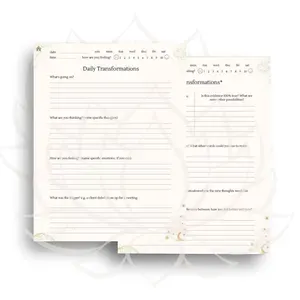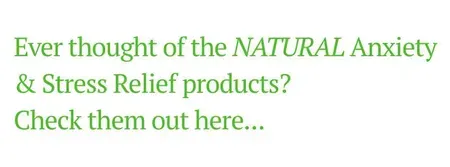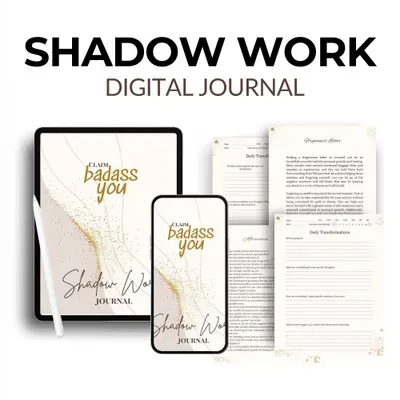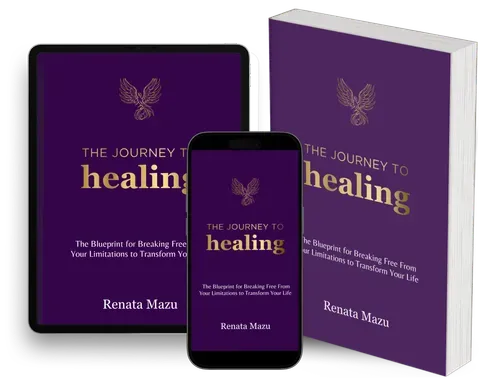
How to Calm Anxiety Without Freezing or Shutting Down
Tools and Methods to Stop Anxiety Attacks Fast
Ever felt like you're suddenly overwhelmed by a wave of fear and worry that you can't seem to control? It can feel like an overwhelming rush of panic and fear that hits you out of nowhere. Your heart may pound, your hands might get sweaty, and your thoughts could start racing uncontrollably. Understanding how to soothe these intense episodes is crucial. That might have been an anxiety attack. It's like your body hits the panic button and your heart starts racing, you might sweat a lot, and feel dizzy—all at once. Knowing how to cool down during these moments is super important. It can help you feel better quicker and gives you the power to handle these intense feelings. Let's dive into understanding what an anxiety attack really is and explore some simple ways to soothe yourself when one hits.
Understanding the nuances between an anxiety attack and a panic attack can be crucial for effective management of these conditions. While both are related to anxiety, they manifest differently.
Anxiety Attacks
These are characterized by a gradual increase in apprehension and worry leading up to a stressful event. For example, you might start feeling increasingly anxious as the day of a major presentation approaches. The symptoms—such as mild trembling, a sense of unease, and accelerated heart rate—are a response to perceived stress or threat and generally build up over time.
Panic Attacks
These episodes are much more sudden and intense compared to anxiety attacks. They can happen without any obvious reason and come on quickly. The symptoms are quite severe and can really shake you up. This includes things like really sharp chest pain, a heart that beats way too fast, feeling short of breath, getting dizzy, or feeling an extreme fear—sometimes even a fear that you might die or completely lose control. Someone might be doing something totally normal like watching TV or sleeping, and suddenly a panic attack hits them out of nowhere.
A real-life example could be someone who has panic attacks in crowded places. They might feel fine at home but could suddenly experience intense fear and physical symptoms just by stepping into a busy mall, even though there’s no immediate threat.
Distinguishing between these two can help in identifying the right coping strategies and treatments, such as cognitive-behavioral therapy for anxiety attacks, which focuses on managing the stressors, or more immediate interventions like breathing exercises for panic attacks to control acute symptoms.
UNDERSTANDING ANXIETY ATTACKS
An anxiety attack, also known as a heightened anxiety episode, is a condition characterized by the gradual onset of intense anxiety, which builds in response to stress or anticipated events. It differs from a panic attack, which typically erupts suddenly and without a specific trigger. Anxiety attacks are often the result of prolonged stress and can be tied to specific situations that evoke fear or worry.
Possible Symptoms of an Anxiety Attack
The symptoms of an anxiety attack are varied and can affect both the mind and body, including:
Increased heart rate and palpitations. The sensation of your heart beating rapidly is common, often prompted by the body's fight-or-flight response.
Restlessness and nervousness. During an anxiety attack, you may feel an overwhelming urge to move or escape the situation, making it hard to stay still.
Difficulty concentrating or mind going blank. Anxiety can scatter your thoughts and make it hard to focus on tasks or make decisions.
Muscle tension. This could manifest as tightening of the muscles, often resulting in physical pain or discomfort over time.
Excessive sweating. Anxiety can trigger your sweat glands, leading to noticeable sweating even without physical exertion.
Shortness of breath or tightness in the chest. This symptom can be particularly alarming as it mimics those of more serious conditions like heart attacks.
Irritability. Those experiencing an anxiety attack often report feeling unusually irritable or on edge.
Additionally, anxiety attacks can lead to other psychological and emotional symptoms such as a feeling of impending doom, intense fear about the future, or excessive worries about everyday situations and problems.
Understanding the Anxiety Triggers
Identifying what triggers anxiety attacks is crucial for management and prevention. Common triggers include stress at work, financial concerns, family conflicts, or major life changes such as moving or changing jobs. Personal triggers can also include phobias, such as fear of heights or crowded spaces.
Coping Mechanisms
While an anxiety attack can be overwhelming, several strategies can help manage and reduce symptoms. These include deep-breathing exercises, mindfulness meditation, and grounding techniques which help draw attention away from the anxiety and back to the present. Long-term coping strategies might involve therapy, such as cognitive-behavioral therapy (CBT), lifestyle changes including regular exercise, and possibly medication prescribed by a healthcare provider.
By understanding and acknowledging the signs and symptoms of anxiety attacks, individuals can begin to take control of their responses and work towards minimizing the impact of anxiety in their lives.
Common Triggers and Physiological Responses Involved
Understanding what sparks an anxiety attack and how the body physically reacts can significantly improve management techniques. Let’s delve deeper into the common triggers that can set off these overwhelming sensations and examine the physiological processes that occur during an anxiety attack.
What are the Triggers?
Anxiety attacks can be initiated by various triggers, unique to each individual’s experiences and environment.
Here’s a more in-depth look at some common causes:
Stressful Events. Life's significant challenges, such as undergoing a major career transition or dealing with the loss of a loved one, can be potent triggers. The stress from adjusting to these changes can cumulate, often manifesting as anxiety attacks.
Health Concerns. Worrying about health, whether it’s dealing with a chronic illness or experiencing symptoms of a new health issue, can trigger intense anxiety, particularly if the condition affects daily functioning or quality of life.
Financial Instability. Financial insecurity, whether it’s due to unexpected expenses, unemployment, or debt, can cause extreme stress and anxiety, particularly if there is uncertainty about resolving these issues.
Social Situations. For those with social anxiety, events like parties or professional meetings can trigger intense feelings of anxiety. The fear of being judged or not measuring up can be overwhelming.
Phobias. Encountering a specific phobia, such as heights, spiders, or flying, can trigger an immediate and intense anxiety attack. The response is often automatic and disproportionate to the actual danger posed by the situation.
Substances. Stimulants such as caffeine can exacerbate anxiety symptoms. Additionally, some medications might have side effects that include symptoms of anxiety, which can further complicate existing conditions.
Physiological Responses. When triggered, the body undergoes a rapid transformation as part of the acute stress response, often referred to as the fight-or-flight response.
Here’s what happens:
Adrenaline and Cortisol Release. These hormones are pivotal in the fight-or-flight response. Adrenaline increases alertness and physical readiness to respond to a threat, while cortisol helps to mobilize energy by increasing glucose in the bloodstream.
Cardiovascular Changes. The heart pumps faster to prepare the body for action, which can feel like palpitations or a pounding heart. Blood pressure rises to deliver more oxygen and nutrients to major muscle groups.
Respiratory Adjustments. Breathing becomes rapid and shallow to increase oxygen intake. This hyperventilation can lead to dizziness or a lightheaded feeling, as the balance of oxygen and carbon dioxide in the blood shifts.
Muscle Readiness. Muscles tense up instinctively, preparing the body to either fight the threat or flee from it. This can cause shaking or trembling.
Sweating. Increased sweating helps cool the body during intense physical reactions. It's also a common response to nervousness or stress.
Digestive System Slowdown. During an anxiety attack, digestion can slow down or stop as the body redirects energy to more critical functions. This might cause stomach upset or nausea.
Recognizing these triggers and understanding the body’s automatic response can empower individuals to take early action to mitigate the effects of an anxiety attack. Techniques like deep breathing, mindfulness, and gradual exposure to feared situations under controlled conditions can be very effective in managing and reducing the frequency of anxiety attacks. Additionally, strategies such as lifestyle adjustments, stress management, and seeking professional guidance can provide long-term relief and improvement.
IMMEDIATE STEPS TO CALM AN ANXIETY ATTACK OR WORRY
When you're experiencing an anxiety attack, acting quickly to calm your nervous system can significantly reduce the intensity and duration of the episode. One of the most effective ways to regain control during an anxiety attack is through focused breathing techniques.
DEEP BREATHING EXERCISES TO STABILIZE YOUR MIND & BODY
1. Focused Breathing Techniques to Deal with Anxiety
Deep Breathing Exercises. These are designed to slow your heart rate and promote relaxation, countering the rapid, shallow breathing that often accompanies an anxiety attack.
Here are two techniques you might find particularly helpful:
Diaphragmatic Breathing.
Also known as belly breathing, this technique involves breathing deeply into the diaphragm rather than shallowly into the chest.
To practice diaphragmatic breathing:
Lie down or sit comfortably with one hand on your belly and the other on your chest.
Breathe in slowly through your nose, ensuring that your diaphragm inflates with enough air to create a stretch in your lungs. Your hand on your belly should rise higher than the one on your chest.
Exhale slowly and deliberately through pursed lips, engaging your stomach muscles to push all the air out.
Repeat this process for several minutes, focusing fully on the sensations of breathing.
4-7-8 Breathing Technique
Developed by Dr. Andrew Weil, the 4-7-8 method is a simple but powerful breathing technique that promotes calmness and relaxation. It’s particularly effective for reducing anxiety and helping you fall asleep.
Here’s how to do it:
Sit comfortably with your back straight and place the tip of your tongue against the ridge of tissue just behind your upper front teeth, keeping it there throughout the exercise.
Exhale completely through your mouth, making a whoosh sound.
Close your mouth and inhale quietly through your nose to a mental count of four.
Hold your breath for a count of seven.
Exhale completely through your mouth, making a whoosh sound to a count of eight.
This is one breath. Now inhale again and repeat the cycle three more times for a total of four breaths.
Effectiveness of Breathing Techniques
These breathing exercises are beneficial because they increase the amount of oxygen that reaches your brain, which helps to foster a state of calm. They divert your mental focus from any stressors that may be causing the anxiety attack, effectively steering your thoughts away from anxiety-inducing patterns.
Engaging in deep breathing also activates the parasympathetic nervous system, which serves to counteract the body's acute stress response, or fight-or-flight mechanism. This helps to alleviate the immediate physical symptoms associated with anxiety.
Utilizing Focused Breathing During an Anxiety Attack
Implementing these breathing techniques when an anxiety attack begins can produce an immediate soothing effect. This not only helps in managing the symptoms as they occur but also aids in regaining control during an episode. With regular practice, these techniques can reduce both the frequency and the severity of anxiety attacks, making them a valuable tool in your anxiety management toolkit.
2. Grounding Techniques to Reduce Anxiety
Grounding techniques are hands-on strategies used to center oneself during an anxiety attack. These methods involve engaging the senses to draw your attention away from anxiety and anchor you in the present moment. A popular and easy-to-remember method is the "5-4-3-2-1" grounding technique, known for its effectiveness in shifting focus from internal stress to external reality.
5-4-3-2-1 Technique
This technique harnesses the power of your senses to help stabilize your mood quickly:
5. Visuals, Name five things you can see around you. This could be anything from a book on your desk to a bird outside your window.
4. Touch, Think of four items you can touch and list their textures. This might include the cool surface of your table or the softness of your sweater.
3. Sounds. Listen and identify three sounds in your environment. It might be the hum of a computer or birds chirping outside.
2. Scents. Notice two things that you can smell. If you’re indoors, maybe there’s a scent of coffee or a candle.
1. Taste. Focus on one thing that you can taste right now, like the lingering flavor of a meal or even the taste of your mouth.
Grounding Techniques to Reduce Anxiety
These techniques help by providing a mental distraction, allowing you to break the cycle of escalating anxiety. Engaging your senses grounds you in the present and reduces the intensity of your symptoms by shifting your focus away from distressing thoughts. This sensory focus helps calm the mind and brings a greater awareness of the body, reducing overall anxiety.
Regularly practicing grounding techniques can be a key tool in managing anxiety attacks. They not only offer immediate relief but also build your resilience against future episodes, helping you feel more prepared and in control.
3. Mindfulness and Meditation
Mindfulness and meditation are key practices for managing anxiety attacks effectively. They focus on stabilizing your thoughts and creating a sense of calm, which is especially beneficial during overwhelming moments of anxiety.
How Use Mindfulness and Meditation During an Anxiety Episode
Mindfulness meditation trains you to concentrate on the present moment, which is a crucial skill during an anxiety attack. By directing your attention away from stress-inducing thoughts to a state of active awareness and peace, mindfulness can diminish the acute symptoms of an anxiety attack, such as an accelerated heartbeat or rapid breathing. Regular practice enhances your self-awareness and emotional stability, strengthening your overall mental resilience.
Easy Steps to Begin Mindfulness Meditation
Here's a straightforward guide to start practicing mindfulness meditation:
· Select a Peaceful Spot. Choose a quiet area where you can relax without interruptions.
· Adopt a Comfortable Posture: Sit in a relaxed position, whether on a chair with your feet grounded or cross-legged on a cushion.
· Concentrate on Breathing. Gently close your eyes and focus on your breath. Feel the air move in and out of your body, observe the rise and fall of your abdomen.
· Simply Observe Your Thoughts. It's natural for thoughts to arise during meditation. Rather than engaging with them, simply notice them and let them go, returning your focus to your breathing.
· Consider Using Guided Assistance. If maintaining focus is challenging, try a guided meditation through an app or audio. These resources often provide specific directions and ambient sounds to help keep you engaged.
· Progress Gradually. Begin with short meditation sessions and slowly extend the duration as you become more accustomed to the practice.
Incorporating mindfulness and meditation into your routine not only helps in controlling anxiety attacks as they occur but also contributes to reducing their frequency and severity over time. By practicing regularly, you gain crucial skills that aid in maintaining focus and emotional equilibrium, thereby enhancing your quality of life and mental well-being.
TOOLS & MEDITATION MUSIC FOR ANXIETY AND STRESS RELIEF
HOW MUSE HEADBAND CAN CALM YOUR MIND
The Muse headband is an innovative tool designed to enhance the meditation experience using EEG technology. It functions by monitoring your brain activity during meditation sessions and providing real-time auditory feedback through a connected app. This feedback helps users maintain the meditative state, making meditation more accessible and effective, especially for individuals struggling with anxiety.
How Muse Helps Manage Anxiety Muse's technology aids in reducing anxiety by teaching users how to achieve and sustain a calm mental state. It uses sensors to detect changes in your brain's electrical signals and guides you back to focus if your mind starts to wander. This training helps develop a more focused and resilient mind, capable of managing stress and reducing episodes of anxiety over time.
Benefits of Using Muse Using the Muse headband can bring several benefits for those dealing with anxiety
Improved Focus and Concentration. Regular use of Muse helps train your brain to concentrate better, which is beneficial not only during meditation but in daily activities.
Stress Reduction. By providing feedback on your mental state, Muse encourages adjustments in real-time, promoting relaxation and stress relief.
Trackable Progress. The app allows you to track your meditation progress over time, giving you insights into your mental health and helping motivate continued practice.
Why Choose Muse?
For those looking to manage anxiety, the Muse headband offers a unique combination of technology and wellness. It supports users in developing a consistent meditation practice, which is key to long-term anxiety management. Its user-friendly interface and scientifically backed approach make it a compelling choice for anyone looking to enhance their mental health through meditation.
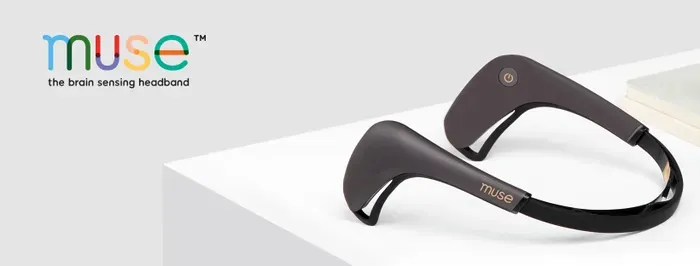
CHECK HOW THIS MUSE TECHNOLOGY CAN IMPROVE SLEEP & REDUCE ANXIETY
LONG-TERM STRATEGIES TO MANAGE ANXIETY
Regular Exercise
Incorporating regular physical activity into your routine is an effective strategy for managing anxiety in the long term. Exercise not only helps reduce the occurrence of anxiety attacks but also lessens their severity when they do happen.
Why Exercise Helps with Anxiety
Stress Hormone Reduction. Engaging in physical activity decreases stress hormones like adrenaline and cortisol and increases endorphins, the body's natural mood lifters.
Improved Sleep Patterns. Regular exercisers often experience better sleep quality, which is crucial for maintaining emotional balance and reducing anxiety.
Increased Energy and Well-being. Exercise boosts overall energy levels and contributes to cardiovascular health, enhancing blood flow and oxygen to the brain.
Enhanced Mental Resilience. Consistent physical activity builds mental stamina and resilience, enabling better stress management and recovery from anxiety episodes.
Effective Types of Exercise for Anxiety
Cardiovascular Exercises. Activities like jogging, brisk walking, or cycling that increase the heart rate can significantly alleviate symptoms of anxiety.
Strength Training. Participating in moderate weightlifting or bodyweight exercises a few times a week can also combat anxiety by boosting confidence and physical capacity.
Yoga and Tai Chi. These mind-body practices emphasize controlled breathing and mental focus, which are directly beneficial for calming the mind and reducing anxiety.
Tips for Incorporating Exercise into Your Routine
Set Achievable Goals. Begin with manageable goals that don't feel overwhelming; even ten minutes a day can make a difference
Be Consistent. Try to exercise regularly, as the frequency of physical activity contributes more to long-term anxiety relief than the intensity of the workouts.
Find Enjoyable Activities. Choose forms of exercise that you enjoy, which makes it more likely that you'll stick with them long-term.
Regular exercise serves as a natural and effective way to manage anxiety, promoting better health and a more balanced mood.
Healthy Diet and Sleep Habits to Calm Your Anxiety
Maintaining a nutritious diet and ensuring sufficient rest are crucial components in managing anxiety. These elements play a direct role in your body's physiological and psychological health, which can profoundly affect your ability to cope with stress.
Nutritional Influence on Anxiety
Essential Nutrients. A diet rich in omega-3 fatty acids, zinc, and vitamins B and D can help manage anxiety. These nutrients support brain health and affect neurotransmitter function, which can stabilize mood.
Steady Blood Sugar. Avoiding large swings in blood sugar by eating regular, balanced meals can prevent the sudden energy crashes that may trigger anxiety episodes.
Stay Hydrated. Proper hydration is important for maintaining optimal brain function and mood balance, as even mild dehydration can increase susceptibility to anxiety.
Sleep's Role in Anxiety Management
Recovery and Processing. Quality sleep allows the brain to recover and process emotional experiences from the day. Insufficient sleep can heighten anxiety and emotional responses.
Establish a Sleep Schedule. Going to bed and waking up at the same time each day helps regulate your body's clock and can improve the quality of your sleep, reducing anxiety.
Pre-Sleep Routine. Engaging in calming activities before bed, such as reading or gentle yoga, can prepare your mind and body for sleep, making it easier to fall asleep and stay asleep.
Practical Tips for Diet and Sleep Improvements
Plan Balanced Meals. Ensure each meal contains a good balance of carbohydrates, proteins, and fats to keep energy levels stable.
Consistent Eating Schedule. Eating your meals at the same times daily can help regulate your body's natural rhythms and aid in mood stabilization.
Optimal Sleep Environment. Make your bedroom conducive to sleeping by keeping it cool, quiet, and dark. Investing in a comfortable mattress and pillows can also promote better sleep.
Mind Stimulant Intake. Limit caffeine and heavy meals close to bedtime as they can disrupt sleep.
By focusing on these areas, you can create a foundation that supports overall mental health, diminishes anxiety, and fosters a more resilient disposition towards daily stressors. Implementing these strategies can lead to significant improvements in how you feel both physically and emotionally.
Cognitive Behavioral Techniques to Help with Anxiety
Cognitive Behavioral Therapy (CBT) is an effective method for managing anxiety, especially useful in addressing the negative thought patterns that often trigger anxiety symptoms.
How CBT Can Transform Your Approach to Dealing with Anxiety Triggers
Overview of CBT and Its Impact on Anxiety: CBT operates on the principle that thoughts, feelings, and behaviors are interconnected. The therapy aims to modify negative thought patterns that contribute to anxiety, facilitating a shift in behavior and emotional response. It emphasizes the identification and restructuring of irrational beliefs, helping individuals cultivate a healthier, more balanced perspective.
Steps CBT Uses to Modify Responses to Anxiety Triggers
· Identifying Triggers. The first step in CBT is to pinpoint the exact thoughts or scenarios that ignite anxiety. These triggers might range from public speaking and networking events to personal health or financial concerns.
· Challenging Negative Thoughts. CBT equips individuals with tools to critically assess and challenge the accuracy of their anxiety-inducing thoughts. By questioning these automatic thoughts, one can reshape them into more realistic and less distressing beliefs.
· Developing Coping Mechanisms. CBT aids in building effective coping strategies to handle anxiety symptoms. Techniques may include controlled breathing, muscle relaxation exercises, or role-playing to better prepare for stressful interactions or events.
· Behavioral Experiments. This aspect of CBT involves testing out new behaviors in response to old triggers, providing practical evidence to the individual that they can handle stressful situations better than they previously thought. For example, someone afraid of public speaking might start with speaking to a small, familiar group before addressing larger crowds.
Implementing CBT in Daily Life
Consistent Practice. Mastery of CBT techniques comes with practice. Regularly applying these strategies can help lessen the intensity of anxiety responses and improve overall mental resilience.
Seeking Professional Support. While some CBT strategies can be practiced independently, working with a trained therapist can enhance the effectiveness of the treatment, providing customized guidance and support.
Through systematic application of these cognitive and behavioral adjustments, CBT effectively reduces the severity of anxiety induced by specific triggers, fostering a calmer and more controlled mental state.
RECOGNIZING WHEN PROFESSIONAL HELP MIGHT BE BENEFICIAL FOR ANXIETY
When grappling with anxiety, it's crucial to discern when seeking professional assistance could be helpful. Sometimes, our own coping mechanisms may prove insufficient, and that's perfectly alright.
Indicators That it Might be Time to Consider Reaching out for Help
1. Persistent Symptoms. If anxiety symptoms persist or significantly disrupt your daily life, seeking professional help could be beneficial. These symptoms may encompass constant worrying, difficulty concentrating, or physical manifestations such as rapid heartbeat or shortness of breath.
2. Difficulty Coping. If your usual coping strategies appear inadequate, or if managing anxiety independently becomes challenging, consulting a professional may offer support.
3. Impact on Relationships. Anxiety can strain relationships with loved ones or colleagues. If you observe tension or conflict arising due to your anxiety, professional support may help alleviate these issues.
When contemplating professional help for anxiety, various types of professionals can provide assistance
1. Psychologists. Psychologists specialize in assessing and diagnosing mental health conditions, including anxiety disorders. They offer therapy and counseling to assist in symptom management.
2. Psychiatrists. Psychiatrists are medical doctors with expertise in mental health. They diagnose and treat anxiety disorders, often prescribing medication to alleviate symptoms.
3. Therapists. Therapists, including counselors and social workers, provide talk therapy to explore and address the underlying causes of anxiety. They teach coping mechanisms and offer support throughout the anxiety management process.
In managing chronic anxiety, both medication and therapy can play significant roles
Medications. Certain medications, such as antidepressants or anti-anxiety medications, can potentially alleviate chronic anxiety symptoms. A psychiatrist can assess whether medication may be appropriate and prescribe the necessary dosage.
Therapy. Therapy, particularly cognitive-behavioral therapy (CBT), can be effective in managing chronic anxiety. CBT helps identify and challenge negative thought patterns, fostering healthier coping strategies. Working with a therapist can provide valuable support and guidance in effectively managing anxiety.
CREATING A BALANCED LIFESTYLE TO REDUCE ANXIETY ATTACKS
In the quest to manage anxiety effectively, lifestyle adjustments play a pivotal role. Let's delve deeper into two key techniques that can significantly contribute to preventing anxiety attacks.
Routine and Leisure Activities
Establishing a consistent routine can act as a stabilizing force in the face of anxiety. By having set times for waking up, eating meals, exercising, and winding down for bed, you provide yourself with a sense of predictability and control over your day. This predictability can help alleviate feelings of uncertainty and chaos that often exacerbate anxiety.
Alongside routine, incorporating leisure activities into your schedule is equally important. Engaging in hobbies and interests that bring you genuine pleasure and relaxation is not merely a luxury but a vital aspect of self-care. Whether it's painting, playing a musical instrument, hiking in nature, or simply spending quality time with loved ones, these activities provide a necessary respite from the demands of daily life. They offer moments of joy and fulfillment, helping to counterbalance the stressors that may trigger anxiety.
Moreover, prioritizing leisure activities serves to remind you of your identity beyond your anxiety. It reinforces the notion that you are more than your worries and fears, empowering you to reclaim agency over your life and cultivate a sense of purpose and fulfillment.
Stress Management Techniques
Stress management techniques are invaluable tools in navigating the turbulent waters of anxiety. Among these techniques, journaling stands out as a powerful means of self-expression and reflection. Keeping a journal allows you to externalize your thoughts and emotions, providing a safe space to process and make sense of your experiences. Whether you choose to jot down your worries, document moments of gratitude, or simply free-write without inhibition, the act of writing can be remarkably cathartic. It helps to untangle the knots of anxiety that may otherwise entrap your mind, offering clarity and perspective in the process.
Additionally, mastering effective time management techniques can significantly alleviate anxiety. Feeling overwhelmed by a never-ending to-do list is a common trigger for anxiety attacks. By implementing strategies such as prioritizing tasks, breaking them down into smaller, manageable steps, and setting realistic deadlines, you can regain a sense of control over your schedule. This proactive approach to time management not only enhances productivity but also reduces the likelihood of feeling overwhelmed, thereby mitigating anxiety.
Furthermore, integrating mindfulness practices into your daily routine can foster a profound sense of calm and inner peace. Whether through mindfulness meditation, deep breathing exercises, or mindful movement practices like yoga or tai chi, cultivating present-moment awareness enables you to anchor yourself in the here and now. It allows you to observe your thoughts and emotions without judgment, creating space for acceptance and self-compassion in the face of anxiety.
By embracing routine and leisure activities, as well as adopting stress management techniques like journaling and time management, you empower yourself to proactively prevent anxiety attacks and cultivate a more balanced and fulfilling life. These practices not only provide relief in moments of distress but also lay the foundation for long-term resilience and well-being.
NURTURING YOUR WELL-BEING
In concluding our journey through anxiety management strategies, let's reflect on our discussions and offer some final words of encouragement.
Throughout our exploration, we've delved into various techniques aimed at alleviating anxiety and fostering well-being. From understanding the nature of anxiety attacks to implementing coping strategies such as deep breathing, grounding techniques, and lifestyle adjustments, each step represents a commitment to self-care and resilience.
As you continue on your journey, it's crucial to remember that managing anxiety is a deeply personal endeavor. What works for one individual may not necessarily work for another. Therefore, I encourage you to approach this process with an open mind and a willingness to explore different techniques. Take the time to experiment with various strategies and observe how they resonate with you on a personal level.
Moreover, it's essential to recognize the power of integration in anxiety management. Rather than relying solely on one approach, consider incorporating a holistic array of strategies into your daily routine. Whether it's practicing mindfulness meditation in the morning, engaging in regular exercise, or seeking professional support when needed, each facet contributes to a comprehensive approach to well-being.
As you navigate the complexities of anxiety, know that you are not alone. There is a wealth of resources and support available to assist you along the way. Embrace each step with compassion and patience, honoring the journey of self-discovery and growth.
Uncover, neutralize, and release unsupportive patterns that hold you back and become Free!
TOP 21 BOOKS FOR MANAGING AND REDUCING ANXIETY
1. STOP OVERTHINKING 23 TECHNIQUES TO RELIEVE STRESS, STOP NEGATIVE SPIRALS, DECLUTTER YOUR MIND, AND FOCUS ON THE PRESENT” (THE PATH TO CALM) BY NICK TRENTON
2. UNF--K YOUR BRAIN BY FAITH G. HARPER PHD
3. WINNING THE WAR IN YOUR MIND: CHANGE YOUR THINKING, CHANGE YOUR LIFE BY GROESCHEL & CRAIG
4. REWIRE YOUR ANXIOUS BRAIN HOW TO USE THE NEUROSCIENCE OF FEAR TO END ANXIETY, PANIC, AND WORRY” BY CATHERINE M. PITTMAN PHD, ELIZABETH M. KARLE MLIS
5. UNWINDING ANXIETY. NEW SCIENCE SHOWS HOW TO BREAK THE CYCLES OF WORRY AND FEAR TO HEAL YOUR MIND BY JUDSON BREWER
6. GET OUT OF YOUR HEAD. STOPPING THE SPIRAL OF TOXIC THOUGHTS BY JENNIE ALLEN
7. ANXIOUS FOR NOTHING. FINDING CALM IN A CHAOTIC WORLD BY MAX LUCADO
8. DON'T BELIEVE EVERYTHING YOU THINK. WHY YOUR THINKING IS THE BEGINNING & END OF SUFFERING (BEYOND SUFFERING) BY JOSEPH NGUYEN
9. DON'T BELIEVE EVERYTHING YOU THINK. WHY YOUR THINKING IS THE BEGINNING & END OF SUFFERING” BY JOSEPH NGUYEN
10. THE ANXIETY AND PHOBIA WORKBOOK BY EDMUND J. BOURNE
11. THE JOURNEY TO HEALING. THE BLUEPRINT FOR BREAKING FREE FROM YOUR LIMITATIONS TO TRANSFORM YOUR LIFE BY RENATA MAZU
12. ANXIETY AS AN ALLY BY DAN RYCKERT
13. THE ANTI-ANXIETY FOOD SOLUTION BY TRUDY SCOTT
14. THE ANXIETY AND WORRY WORKBOOK. THE COGNITIVE BEHAVIORAL SOLUTION" BY DAVID A. CLARK AND AARON T. BECK
15. FROM PANIC TO POWER BY LUCINDA BASSETT
16. THE HIGHLY SENSITIVE PERSON BY ELAINE N. ARON
17. RETRAIN YOUR BRAIN (COGNITIVE BEHAVIORAL THERAPY IN 7 WEEKS) BY DR. SETH J. GILLIHAN
18. PRACTICING MINDFULNESS. 75 ESSENTIAL MEDITATIONS BY MATTHEW SOCKOLOV
19. DARE. THE NEW WAY TO END ANXIETY AND STOP PANIC ATTACKS BY BARRY MCDONAGH
20. THE WORRY TRICK BY DAVID A. CARBONELL
21. HARDCORE SELF HELP: F**K ANXIETY BY ROBERT DUFF
The Journey to Healing
The Blueprint for Breaking Free From
Your Limitations to Transform Your Life
Paperback & Digital Version
By regularly doing the inner work, you can embark on a transformative journey of self-discovery, healing, and personal growth. Remember, your shadow side holds the keys to understanding and embracing your true self.
Use these journals for Shadow Work & Self Discovery:
DIGITAL SHADOW WORK JOURNAL
PRINTABLE SHADOW WORK JOURNAL
SELF-DISCOVERY AFFIRMATIONS JOURNAL
Disclaimer: To the best of our knowledge the information contained in this website is true and accurate. We cannot guarantee that you will achieve the desired results using these principals as every person and situation is unique and unpredictable. Please use discretion when using the tools suggested and contact a professional for any health, financial, or legal advice. We are not responsible for how you decide to use this information. Some of the offers promoted on this site are affiliate offers. We may be getting compensated for referring you to these offers.
Copyright © 2025 — ClaimBadAssYou journals. All rights reserved.

